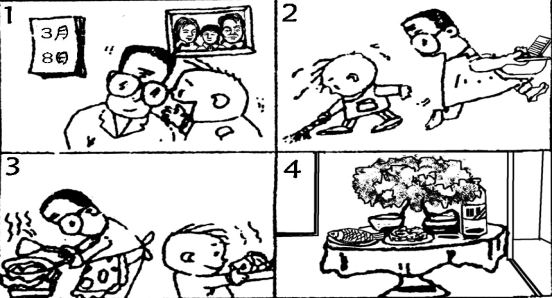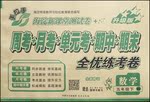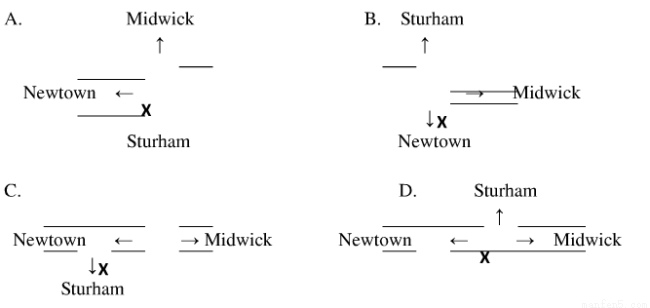题目内容
下列四幅图描述了李华一家某一天的经历。请根据画面及图中的有关提示,用第三人称的口吻写一篇100字左右的短文。
注意:1、文章的开头已给出。
2、可以适当增加细节,使故事完整连贯。

It was March the eighth that day, Women’s Day.
__________________________________________________________________
__________________________________________________________________
__________________________________________________________________
It was March the eighth that day, Women’s Day. LiHua had a good idea and told his father that he was going to do something to celebrate it. He asked his father to help him.
First they decided to do some housework, which was always done by his mother. LiHua cleaned the house completely while his father did some washing. Then they made a good meal, cooking fish, pork, chicken, soup and some other delicious dishes. LiHua laid the table and set a vase full of flowers in the middle of the table. After that they hid themselves behind the door, waiting for Mother so as to give her a happy surprise. When his mother came back and saw delicious dishes and drinks on the table, she felt very curious and happy. The family had a pleasant festival.
【解析】
试题分析:分析要求可知,下列四幅图描述了李华一家某一天的经历。请根据画面及图中的有关提示客观描述,写一篇100字左右的短文。要点:第一幅图:李华把他的主意告诉父亲 ,第二幅图:李华扫地、父亲洗衣服 ,第三幅图:李华和父亲下厨房做菜 ,第四幅图:餐桌上有花瓶、饮料、鱼、肉等等。
短文应该用一般过去时,第三人称。字迹工整美观,尽量多使用较高级的词汇和短语以及固定句式,注意句子之间的连贯性。
【亮点说明】 文中用了一些高级的短语和句式。如:cooking、waiting非谓语结构,which引导的非限制性定语从句,While状语从句等都很不错。
考点:看图作文。

 手拉手全优练考卷系列答案
手拉手全优练考卷系列答案